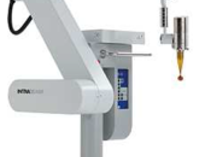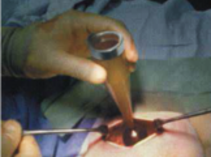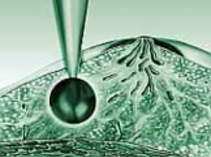Intraoperative Radiotherapy (IORT)
Here at the University Medical Center Freiburg we perform intraoperative radiotherapy (IORT) either with the mobile Intrabeam system by Carl Zeiss AG or with the Mobetron linear accelerator by MD51, directly in the operating room.
During IORT the radiotherapist, the surgeon and the medical physicist work very closely together. In contrast to other radiation methods, healthy organs can be moved out of the radiation beam and intraoperative findings can directly influence the extent of the radiotherapy.
The Intrabeam system generates low energy X-rays, which are most effective at close range. With a spherical applicator the tumor bed, or resection cavity, can be directly irradiated.
The Mobetron system is a mobile linear accelerator using electron radiation. This provides careful control of radiation penetration depth, helping to protect healthy organs. The mobility of the device is suitable for adapting radiation to the individual case.
These specialized mobile units enable us to provide optimum protection of healthy tissue. The devices can be utilized for a wide range of surgical interventions, e.g. in senology (breast cancer), gynecology, and urology, as well as abdominal, plastic and thoracic surgery.
Intraoperative Radiotherapy in Breast Cancer
- New treatment improves chances of recovery
- Optimal protection of healthy tissue
- Shorter duration of treatment
Breast cancer is the most common form of cancer in women. In recent years, a new breast-conserving treatment has gained importance: intraoperative radiotherapy (IORT). The Department of Gynecology and Obstetrics of the University Medical Center Freiburg (Director Prof. Dr. med. Ingolf Juhasz-Böss) together with the Department of Radiation Oncology (Director Prof. Dr. med. A.L. Grosu) implement this innovative and beneficial method with the Intrabeam radiotherapy system built by Carl Zeiss AG, Germany. Prof. Dr. Anca-Ligia Grosu emphasizes the high radiation dose that can be applied directly in the tumor region with IORT. The radiotherapist and the surgeon collaborate closely during the procedure. According to Dr. T. Erbes, Head of the Senology Unit of the Department of Gynecology and Obstetrics, IORT offers a very precise way to treat the tumor bed, where there is the greatest risk of cancer recurrence, while still in surgery. The soft X-rays are most effective at close range. Thus adjacent organs, which are beyond the radiation field, can be protected from exposure to radiation while still maintaining a high radiation dose in the tumor bed.
Last but not least, the combination of IORT and conventional radiotherapy of the whole breast results in a much shorter duration of treatment.
Prof. Dr. med. Anca-Ligia Grosu
Chair of Department of Radiation Oncology
University Medical Center Freiburg
Phone: 0761 270-94600
E-Mail: anca.grosu@uniklinik-freiburg.de
Prof. Dr. med. Ingolf Juhasz-Böss
Chair of Department of Obstetrics and Gynecology
University Medical Center Freiburg
Phone: 0761 270-30240
E-Mail: ingolf.juhasz-boess@uniklinik-freiburg.de

Chair of Department of Radiation Oncology
Registration and Information
Ambulatory healthcare center
Telefon +49 (0) 761 270-94620
Telefax +49 (0) 761 270-95820
strahlenheilkunde.anmeldung@uniklinik-freiburg.de
Private patients healthcare center
Telefon +49 (0) 761 270-94730
Telefax +49 761 270 94720
Office manager
Telefon +49 (0) 761 270-94610
Telefax +49 (0) 761 270-94720
britta.cousin@uniklinik-freiburg.de




